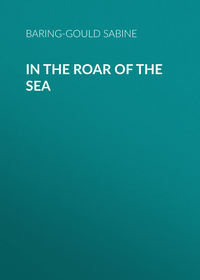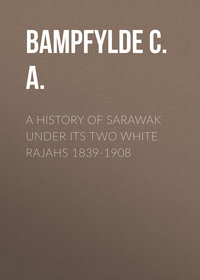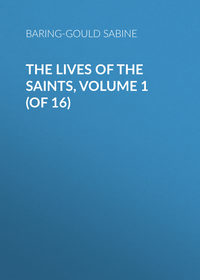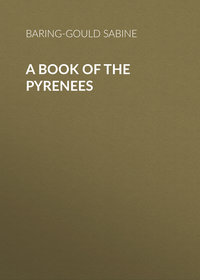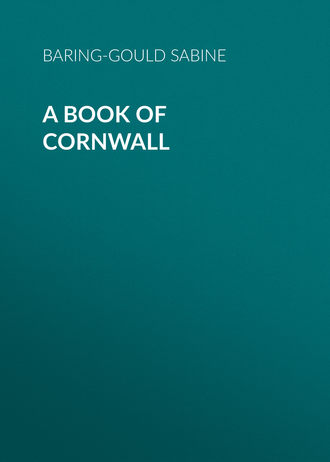 полная версия
полная версияA Book of Cornwall
"Hold not Thy tongue, O God of my praise: for the mouth of the ungodly, yea, the mouth of the deceitful, is opened upon us."
That night the ship was lost. At six in the evening the admiral, who had brought the fleet to during the afternoon, made sail again, and stood away under canvas. Directly after he made signals of distress, which were returned by several of the fleet. Sir George Byng in the Royal Anne, who was a mile to windward of him, saw the breakers, and saved his vessel with difficulty.
The Association, Sir Cloudesley's vessel, had struck at eight o'clock upon the Gilstones, a cluster of rocks of what are called the Western Isles, and in about two minutes went down with all on board save one. He clung to a piece of the wreck, and was swept on to the Hellweathers, where he remained for some time till rescued. The Eagle and the Romney were also lost with all hands. The Firebrand was lost as well, but the captain and some of the crew were rescued. The Phœnix ran ashore, but was got off again. The Royal Anne was saved. So was the S. George by the merest accident. She struck the same rock as the Association and about the same time, but the wave which sank the admiral's ship floated the S. George from the rocks.
The body of Sir Cloudesley Shovel was picked up at Porth Hellick by a soldier and his wife, who gave it decent burial in the sand. It was afterwards conveyed at Lady Shovel's desire to Westminster Abbey and laid there. She rewarded the soldier with a pension for life. The diamond ring stolen from the body was sent to Lady Shovel by the thief, when he was dying.
Finally, with its amount of sunshine, with its equable temperature, and its air charged with ozone, I believe Scilly will be the sanatorium of the future.
Note.-Book to be consulted: -
Tonkin (J. C. and R. W.), Guide to the Isles of Scilly. Penzance, n. d. A capital little book.
1
Irish Nennius, ed. Todd and Herbert (Dublin, 1848), p. 237.
2
Misses Couch were misled when they visited S. Mawes, and they give a photograph of a well which is not the holy well. The latter is among the houses opposite the post office, and had an arched entrance, now walled up.
3
Matthews, History of the Parishes of S. Ives, Lelant, Towednack, and Zennor (London, 1892), p. 40.
4
Archæologia Cambrensis, January, 1899. See also A. J. Langdon, "The Ornament of the Early Crosses of Cornwall," Journal of the Royal Institution of Cornwall, vol. x. (1890-1).
5
Not to be confounded with S. Clether of Clodock, in Herefordshire, son of Gwynnar, and from whom the poet Taliesin was descended. The invasion of Carmarthen by Dyfnwal from the north had much to do with Clether's departure.
6
Tremendous confusion has been made of his life, as he has been confounded with a S. Paternus, who was Bishop of Vannes in 462 or 465; and the Cornish Venedotia has been construed as Venettia, Vannes. Nearly a century intervened between the two saints.
7
The Cornish Magazine, 1899.
8
Guest, Mabinogion, p. 227.
9
Celtic Scotland. Edinburgh, 1876-80.
10
"Cornish Choughs," in the Journals of the Roy. Inst. of Cornwall, x. (1890-1).
11
New Edition, 1893, vol. i. p. 136.
12
"The earthwork, of which a great part is still in existence, does not command the steep part of the slope on the other three sides, though the guns would be available against an enemy after he had once established himself on the plateau."
13
Lord Tenterden in the summing up of Rowe v. Brenton, 1830.
14
After the Armada the Corporation of Saltash raised the harbour due to seven shillings for a Spanish ship. This sum is still paid by Trinity House, which, however, exacts two shillings only from the Spaniards, the same as from a French or German vessel.
15
I have given them in my Garland of Country Song. Methuen, 1895.
16
There are two rivers Lew in West Devon and two in Wales. There is a Loue that flows into the Vézère. There is also Loe Pool by Helston; the root enters into lough or loch.
17
A new edition was published by Longmans in 1845.
18
Madoc and Madan are the same name; oc and an are diminutives. The real name was Aed. It became Mo-aedoc. Mo is a term of endearment-"my" – given to many Irish and Welsh saints.
19
I must caution the visitor against the blunders that crowd the pages of a little local guide to Golant. Amongst other misstatements is this, that the capitals are Norman and the arches of Moorish design. The four-centred arch is quite common in all third-pointed work.
20
Reprinted in Preb. Hingeston-Randolph's Registers of Bishop Grandisson. Exeter, 1897, p. 608.
21
The arch over door and window is decisive against sixth-century work. All the earliest Irish churches have a stone slab thrown across from the jambs, and no arch with key.
22
The church without, as outside of the camp.
23
Not Witherne in Galway, nor Ty Gwyn âr Daf. See Mrs. Dawson's article in Archæol. Cambr., 1898.
24
Sullivan, Introduction to O'Curry's Lectures on the Manners and Customs of the Ancient Irish, 1873, i. p. cliv.
25
Quite the best monograph on the colonisation of Brittany is by Dom Plaine, La Colonisation de l'Armorique par les Bretons insulaires. Paris: Picard, 1899. See also Loth (M. J.), Emigration Bretonne en Armorique. Rennes, 1883.
26
Figured in Wood-Martin, The Rude Stone Monuments of Ireland, 1888, p. 154.
27
Matthews, A History of St. Ives. London, 1892.
28
Jago (F. W. P.), Glossary of the Cornish Dialect. Truro, 1882.


